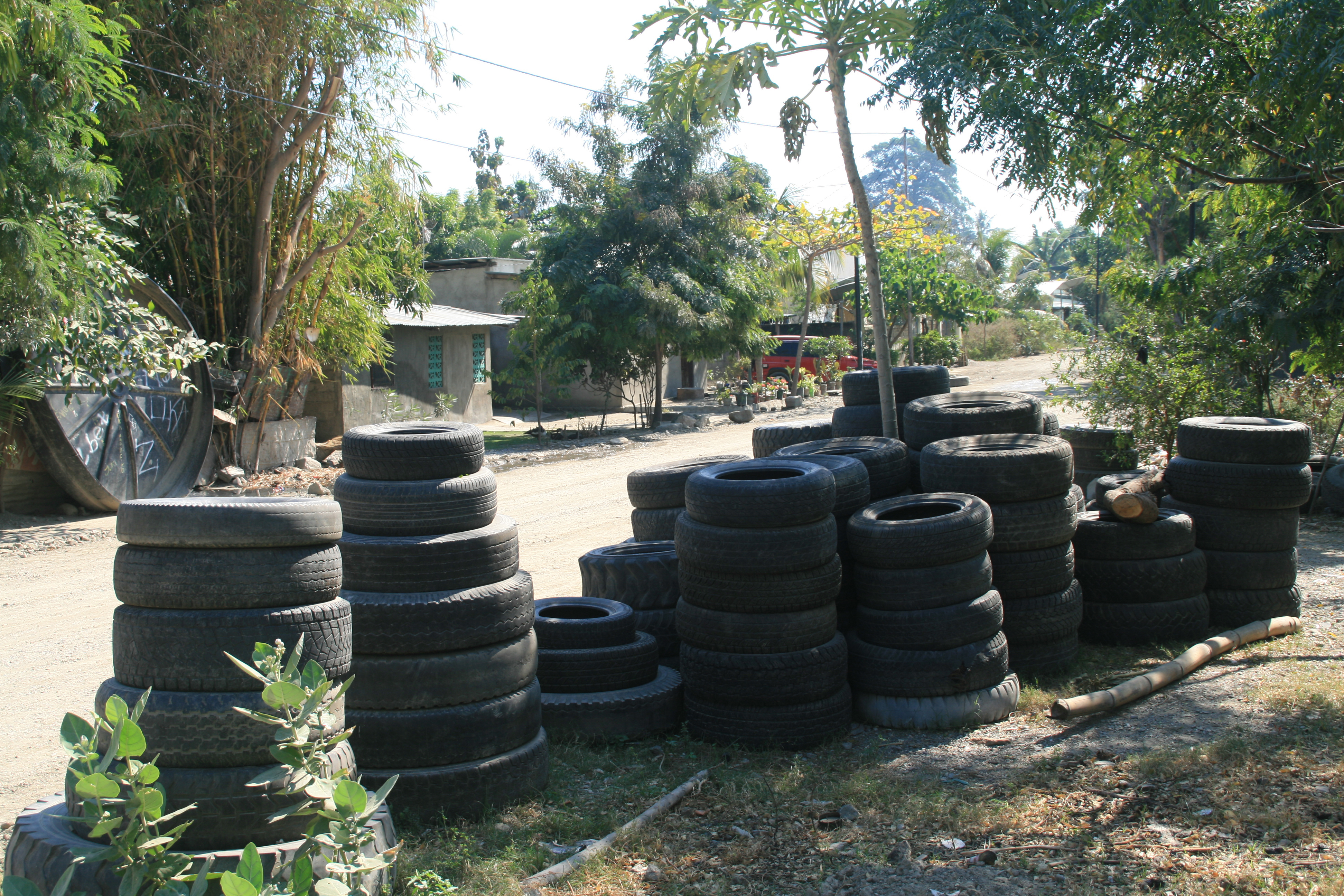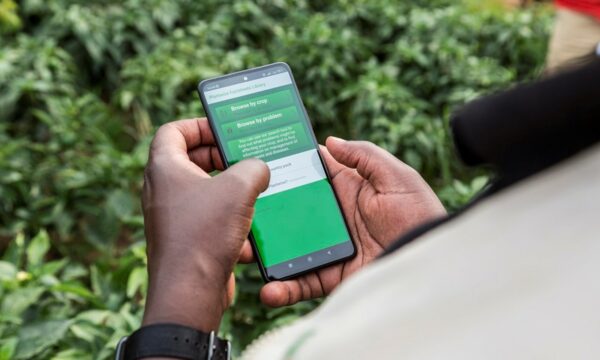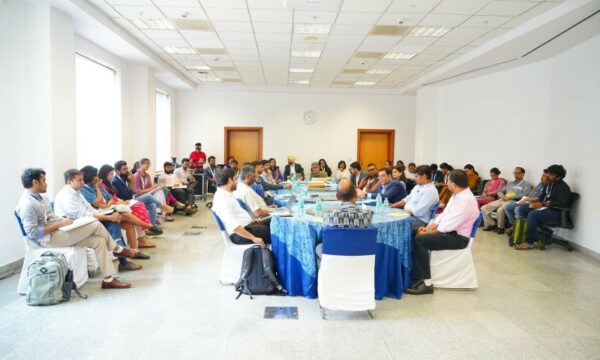
Photo: WHO/J.Gusmao. Used tyes are an ideal habitat and breeding ground for mosquitoes carrying dengue
Our guestblogger is Dr Manoj Aravind, a researcher in Community Medicine, Hyderabad, India and member of the health information forum HIFA2015. Under World Health Day 2014's theme "Small bite, big threat" with its goal of better protection against vector-borne diseases, he describes the case for community action against dengue in his home state of Andras Pradesh. He can be contacted directly by email: aravindbm@gmail.com
Dengue is the fastest growing vector-borne disease (VBD) worldwide, and Andhra Pradesh (a Southern Indian state) is no exception. Here, the cases of dengue reported have been steadily rising from 313 in 2008 to 2299 in 2012. The issue of missed cases due to the partial reporting of dengue positive cases by private hospitals and clinics, which are the most commonly used heathcare facilities in our state, make us sceptical of the true burden of this potentially deadly disease. Having a tropical climate, with increasing urbanization, mostly unplanned, and not much “people participation” in health issues increases our cause for concern.1
Mosquitoes are the most common insects today that city dwellers encounter and one species, Aedes aegypti, are the vector for dengue, transmitting the disease to people via their bite: they are day-biting and breed in clean water collected inside and around houses, especially in urban areas.2 As dengue does not have vaccine or cure, the emphasis is on prevention. The World Health Organization is using this year's World Health Day to build awareness about VBDs and reinforce the need for community empowerment in terms of protecting against these small creatures which are a huge threat to the health of the entire community.3 Andhra Pradesh’s state health machinery is using this opportunity to reach out & empower different stakeholders with effective communication and information.
Awareness of people regarding dengue
When there is no biological vaccine for a disease, knowledge of how this disease spreads and how to prevent this becomes very important. It may then be apt to say that health education leading to healthy behaviours acts as a social vaccine.
The efforts of the state in educating its’ people about dengue, as evaluated by various researchers reveals that there is much ground to cover. In an urban slum in Guntur, it was observed in 2012 by Jogdand and Yerpude4, that almost one-fourth of the inhabitants didn't know that dengue was transmitted by mosquitoes or that those mosquitoes bred in their vicinity, within their households. It is a common practice in this region to use air coolers during summer months (March to June) during which dengue epidemics occur. However around two-thirds were not aware that the mosquitoes spreading dengue would breed and multiply in water stagnating in their coolers. Dengue is not limited to urban areas; a rural based KAP study done by Poonam, Abhay et al 5 in 2011 showed that the awareness of this fast emerging disease was less than satisfactory, with almost 40% not aware that it is a mosquito that transmits dengue.
…Protective behaviour of “knowledgeable” people
For those people “in the know”, knowing that day-biting mosquitoes transmitted dengue did not necessarily mean that they kept away from mosquitoes or adopted behaviours that protected themselves. In the two studies mentioned above, both urban and rural communities fell short of expectations, mostly by adopting easy practices, such as using mosquito repellants. More effective anti-mosquito practices like a “dry day” once a week, not allowing stagnant water to accumulate in the nearby trash of used tyres, disposable plastic cups, coconut shells, or flower pots, etc., were less in favour.
Last but not the least, people need to made aware of the disease characteristics of dengue and encouraged to reach out to an appropriate health centre for diagnosis and symptomatic treatment. There is a considerable gap here, with people not sure of which fever is dengue and when to approach a doctor.
How to address this Awareness Gap?
It is known that just delivering health messages by mass media without interpersonal communication from health workforce or not enabling the communities to participate in vector control measures will not yield much benefit. Hence, WHO's Dengue Strategic Plan for Asia Pacific (2008 – 2015) envisages “Social Mobilization and communication for Dengue” as a key component in reducing the incidence of dengue in this region. The evidence-based approach of COMBI (COMmunication for Behavioural Impact) recommends a team of well-trained health staff with resources AND a community-enabling environment.6
The National Vector Borne Diseases Control Programme (NVBDCP) is the umbrella strategy in India covering control of various VBDs. It has operated since 2002 and combines integrated vector control with health education [Behaviour Change Communication (BCC)] through various media and communication channels. Television is the most common media, followed by newspapers & radio, in spreading this vital information. 50% of urban and around 40% of those in rural areas receive communication about dengue through TV. 4,5 However, only 15 – 25% of them received information from health workers or neighbours / friends. This interpersonal communication is vital in motivating community members to adopt protective behaviours.
Currently, in cities with an Urban Malaria Scheme, the malaria worker is the key. His/her role lies in educating each household in his jurisdiction about VBDs, identifying breeding places and adding the insecticide “Temephos” to identified spots such as air coolers and overhead tanks. He/she plays a pivotal role in empowering the communities and hence he/she needs supportive supervision and resources.
For World Health Day 2014 the various institutions in India, especially in our state of Andhra Pradesh, are enthusiastically carrying out activities involving the various stakeholders, taking the message of “better protection from VBDs” caused by these small creatures; the message of “small bites, big threat”. I hope that this one-day exhortation to spread this information, fires up the spirit to achieve Health For All through Health Information For All by 2015.
Editorial note:
CABI’s Global Health database has exceptional coverage of vector-borne diseases and our cabicode system makes it easy to access. The cabicode VV230 is dedicated to public health pests, vectors and intermediate hosts and is used below in a search focussed on vectors which yields 60100 records. Searching for everything on dengue yields 11062 records.
Searches
1. (de:("disease vectors" OR "intermediate hosts") OR cc:VV230)
2. (dengue)
References
- Dengue cases & deaths statistics NVBDCP Ministry of Health and Family Welfare, Gvt. India.
- http://en.wikipedia.org/wiki/Dengue_fever
- World Health Day 2014: spotlight vector borne diseases
- The Community Knowledge and Practices Regarding Dengue Fever in an Urban Slum Area of South India. Jogdand S.K. and Yerpude N.P. People's Journal of Scientific Research 2013. 6(1): 13-15.
- Knowledge and preventive practicesregarding dengue among adult populationof rural area of Nalgonda district, SouthIndia. Naik P. R., Nirgude A.S. & G.K.P. Int J Biol Med Res 2011. 2(3): 652-655
- http://www.searo.who.int/entity/vector_borne_tropical_diseases/documents/WP-DP8-15/en/
and some more KAPs found in Global Health…
- The relationship between economic status, knowledge on dengue, risk perceptions and practices
Castro, M. et al; PLoS ONE, 2013, 8, 12, e81875 - A study exploring the knowledge, attitudes and practices of young people regarding dengue fever and the extent of community involvement in vector control of the disease in Trinidad and Tobago
Flynn, A.; West Indian Medical Journal, 2012, 61, 6, 615-618 - Knowledge, Attitude and Practice (KAP) of dengue fever in the rural area of central India
Amar Taksande and Bhavna Lakhkar; Shiraz E Medical Journal, 2012, 13, 4, 146-157 - Knowledge, attitude, and practice of dengue disease among healthcare professionals in southern Taiwan
Ho TzongShiann et al.; Journal of the Formosan Medical Association, 2013, 112, 1, 18-23
WHO must-visit links about Dengue
- WHO Infographic representing key healthy behaviours with regards to most vector borne diseases
- WHO-SEARO Poster on Dengue
- WHO- SEARO Factsheet on Dengue
- WHO- SEARO FAQs on Dengue
Related articles
Related News & Blogs
IRRI and CABI collaborate on biocontrol workshop for sustainable agriculture in Odisha
This article was originally published by the International Rice Research Institute (IRRI) To promote the use of biocontrol agents and biopesticides and mainstream Integrated Pest Management in the rice-based ecosystem in Odisha, the International Rice…
24 October 2024









